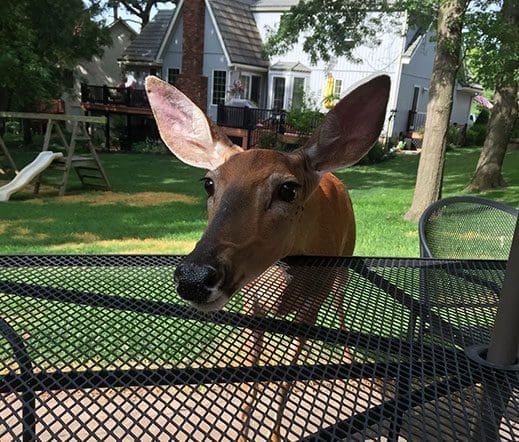Manhattan, Kan. — A decade ago, wildlife officials in the Kansas City area reported that the density of deer in Shawnee Mission Park – a 1,600 acre, multi-use area – was approximately 200 animals per square mile.
“That’s about eight times what we would expect to see naturally in the most abundant areas of our state,” said Drew Ricketts, a wildlife and outdoor enterprise management specialist with K-State Research and Extension.
Kansas City officials are not alone in their concern regarding over-abundant deer populations in urban and suburban areas. The Association of Fish and Wildlife Agencies reported in 2018 that the population of white-tailed, mule and black-tailed deer in the United States was an estimated 30 million – up 1,000 percent from 300,000 reported 100 years earlier.
Urban and suburban areas often are attractive to deer because of an abundance of food and lack of predators.
But Ricketts notes that over-abundant populations create several risks, including:
- Deer-vehicle collisions.
- Tickborne pathogens; ticks tend to be more abundant in areas where deer are more abundant, “and it’s more likely that the ticks are going to carry those pathogens in areas where there are a lot of deer,” Ricketts said.
- Damage to vegetation, including homeowners’ gardens or expensive plants.
Ten years ago, officials in the Shawnee Mission Park area addressed their problem by hiring a contractor, which then trained sharpshooters to reduce the density of deer in the park.
Ricketts noted that some groups also are interested in non-lethal means of managing deer populations, primarily by reducing birth rates. Researchers have tested the effectiveness of performing an ovariectomy – removing the ovaries in the females – and found they could reduce populations by up to 45% over a wide geographic area.
Another method is essentially birth control for white-tailed deer. The U.S. Department of Agriculture in partnership with the Animal and Plant Health Inspection Service and Wildlife Services developed an immunocontraceptive vaccine called GonaCon to manage animal populations. The tactic indicates as much as an 86% reduction in pregnancy rates in does that were treated twice.
So far, though, culling is the least expensive option. Ricketts noted that culling costs about $540 per deer, while the ovariectomy is $1200 on average and GonaCon – which requires two vaccinations – is $2100 on average.
“Sometimes a problem also opens up a new opportunity,” Ricketts said. “We have a very successful urban archery hunting program in the greater Kansas City area, and from other studies around the country, we think we can have up to a 45% population reduction per year.”
Urban archery hunts, he adds, “uses hunters who are excited for the opportunity to harvest a deer as a tool to reduce and sustainably manage overabundant deer populations, while also saving taxpayer dollars.”
The methods used to decrease deer populations, however, often come down to a preference of local authorities and citizens.
“I would encourage reaching out to your local officials, including city council members, mayor and your wildlife and parks commissioner,” Ricketts said. “Between those groups, you will be able to have your voice heard and express your opinions about urban archery hunts or whatever management practices you might like to be considered for over-abundant deer populations in urban areas.”
More information on managing wildlife is available online from K-State’s Department of Horticulture and Natural Resources.













